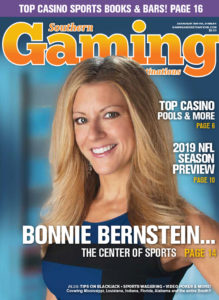
It’s the race that every “horse person” perpetually dreams of winning. In fact, if you combined the available spoils from every other prestigious route that is run throughout the calendar year, the pooled glory would still pale in comparison to that eternal title that is bestowed on the “First Saturday in May”. Alas, the odds against a thoroughbred cantering into that exclusive infield Winner’s Enclosure at Churchill Downs that is reserved specifically for the Kentucky Derby Champion are much more astronomical than you might think.
It follows then that we now tag along on the journey an equine takes from conception, to being royally draped with a blanket of rich red roses.
There is an age-old adage in horse racing which goes, “Breed the best to the best and hope for the best!” Well, in the United States alone, billion-dollar thoroughbred breeding farms and stary eyed private owners attempt to literally live out this saying to the tune of approximately 20,000 foals per year. (To be a little more precise, The Jockey Club reported that around 17,300 foals were registered in 2022. Moreover, around 100,000 foals were registered worldwide.) Thus, we can now clearly see the first hurdle any potential Kentucky Derby Champion must clear. That is, not only winning the race to their mother’s egg (ovum), but then avoiding the 13% miscarriage rate which moderately curtails the overall thoroughbred racehorse community.

For the sake of simplicity, let’s assume that we now have in our possession a baby boy or girl (yes, three fillies have won the Kentucky Derby) that has “hit the ground” completely sound. It follows then that our little fuzzy “bundle of joy” will immediately enter a grooming process which will prepare them for the Sales Ring. While this process varies timewise according to who is prepping our “yearling” (a horse aged between one and two years old) we’re typically talking three to four months of elementary tutoring.
During this infantile season, our toddling thoroughbred will be primed not just physically, but also mentally for auction. See in the end, it all comes down to presenting a pristine pony who has the look of being a potential Champion. Hence, only the best nutrition will be introduced in order that potential buyers are transfixed by both a blinding coat and luminous eye. By the same token, our yearling will spend lots of time around both barn hands and other young equines, so they become less and less bothered by boisterous environments. (Like the ones they will inevitably encounter at the sales pavilion.)
Having been involved on the ownership side concerning two racehorses that I bought into as yearlings, I can now write based on eyewitness experience. I’ll state straightaway that if you don’t have the patience of Job, go find another hobby. My first go around, it took over a year from the time my horse exited the sales ring, to the time he made his debut. In the interim one of the things that takes place is an initial breaking process at a training facility, (which just so you know, rarely runs smooth). In my case, “Air Marshal” was very unruly and refused to consistently take commands from his rider. Consequently, he was gelded (castrated). For those of you who are now wincing uncontrollably, hear me out. I assure you that gelding is a widespread and safe practice that purges the “wild side” of an equine by tapering testosterone. The only problem is, there can be a fairly long recovery period ahead of returning to an everyday training routine.
After a two-year old hopeful gets their legs under them at a training facility, it is off to the racetrack to meet their trainer. Again, in my case, “Air Marshal” was shipped to Horseshoe Indianapolis where he was put under the care of a horseman named Ethan West. Not to be redundant, but here again is where an augmented amount of patience comes into play. For starters, a conditioner will burn through several weeks just laying a “foundation” via a series of long gallops and say three-furlong (3/8 mile) workouts. Progressively “stretched out” over the course of several months, an aspiring racehorse will usually end up “drilling” six or seven furlongs (a furlong is an eighth of a mile) once per week until their trainer deems them to be “race ready”. Oh yeah, did I mention that this basic training often takes place in conjunction with an immeasurable amount of gate schooling, tank swimming and advanced mental disciplines?
One thing even a lot of die-hard thoroughbred racing fans don’t realize is that many aspiring racehorses that were purchased for more money than most of us make in a year never even compete in one single race! I am going to be extremely generous and tell you that only two out of every three equines purchased at auction (because of injury or just being too slow) wind up making a start (it’s probably less than that.) Therefore, if you get into this game and ultimately see your horse’s name listed in black bold print somewhere inside the Daily Racing Form, you’ve already beaten the odds!

Continuing with our hypothetical scenario, let’s say that our two-year old Kentucky Derby prospect is now ready to make their first start. (Note: the Kentucky Derby is restricted to three-year-old horses so we still have a long ways to go.) Now realistically, if a thoroughbred is considered “Derby worthy” they are going to debut at a marquee oval like say, Keenland Racetrack or Santa Anita Racetrack in something called a “Maiden Special Weight” race. (Without getting too technical, a “maiden race” is simply a race where none of the entrants have ever won.) Now I’m not saying that every eventual Kentucky Derby Champion has won at first asking, however, if said maiden doesn’t at least flash a thimble’s full worth of brilliance, you can go ahead and bury your “Derby Dream” next to the dandelions in the back yard.
If our two-year old “Daisy” goes on to graduate from the maiden ranks without breaking a sweat, our trainer then has some options relevant to how they can proceed. A conservative approach might be to enter what is called an “Allowance Race” (a contest with certain conditions, but the competing horses cannot be “claimed” by other trainers like they could be in a “Claiming Race”.) A more aggressive approach might be to enter an ungraded (minor) stakes race or a Graded Stakes race. (Graded Stakes races make up the upper echelon of Thoroughbred Horse Racing and are ranked in ascending order of prestige as follows: G3, G2, G1.) If a horse wins or shows bigtime promise in a dirt route (mile or longer) Graded Stakes race towards the end of their two-year old season, you can bet your 401K that their connections will succumb to an untreatable condition Horse Racing Nation appropriately calls “Derby Fever”!
In that moment when the calendar flips to January 1st and juvenile “Derby Aspirants” morph into three-year-olds, the mad scramble to officially qualify for the “Run for the Roses” gets ratcheted up a notch. Incidentally, when I first started following Thoroughbred Horse Racing back in the late 90’s, the Kentucky Derby field (which is limited to 20 starters) was comprised of those racers who had accumulated the most purse monies via Graded Stakes races. In 2012 though, a new and much superior (in my opinion) qualifying “Point System” was introduced. So, throughout the early spring (and actually late fall but I’m trying to keep this streamline) there are certain marquee “Road to the Kentucky Derby” qualifying races where Kentucky Derby qualifying points are awarded to the contest’s first four finishers. Moreover, point totals increase as the races become more prestigious. For example, Oaklawn Park Racetrack’s 2024 GIII Southwest Stakes awards 20 total Kentucky Derby qualifying points (10-6-4-2). Alternatively, Gulfstream Park’s 2024 GI Florida Derby awards 100 total Kentucky Derby qualifying points (50-25-15-10). The “cutoff” point regarding how few points a horse can possess and still qualify for the Kentucky Derby has varied over the years but in 2023, Cyclone Mischief slid into the 20th qualifying position with 45 points.
Let’s imagine at this juncture that our supposed Kentucky Derby runner has enough qualifying points to enter the starting gate beneath the famed Twin Spires of Churchill Downs on the “First Saturday in May”. (I want to pause a second to intentionally state that 99% of career “Horse People”, who all literally work themselves to death, will never even come close to associating with a Kentucky Derby starter.) Well now, it just simply comes down to winning the most “rough and tumble” 1 ¼ mile race on God’s green Earth. See, year after year, I re-learn the following tragic lesson; the best horse in the field seldom wins the Kentucky Derby.
Try to picture over 100,000 frenzied fans screaming in the direction of a starting gate that has just launched twenty fledgling equines who are all looking to secure an advantageous racing position. It doesn’t take a Road Scholar to realize that this is the perfect recipe to birth exponential chaos. The fact is you don’t just need to be fast to win the Kentucky Derby. All told, you likewise need to be extremely lucky. This truth manifested its ugly mug once again in the 2022 Kentucky Derby when an 80-1 outsider named Rich Strike snuck up the rail in the shadow of the wire to vanquish the heavily favored Epicenter (4-1).
To put everything in a nutshell my friends, you have a better chance of being struck by lightning while being bitten by a Great White Shark than breeding or owning a Kentucky Derby Champion. That said, the next time you are fortunate enough to back a winner with respect to the “Most Exciting Two Minutes in Sports”, just remember that your pony had to quite literally “run through the raindrops” just to put a few extra bucks in your back pocket. With this in mind, maybe think about donating just a small portion of your Derby winnings next time out to one of the many accredited thoroughbred charities that rehome our equine friends after they have finished “giving it their all” inside the “Sport of Kings”!
By Eric Floyd
CLICK HERE to subscribe to Southern & Midwest Gaming and Destinations





